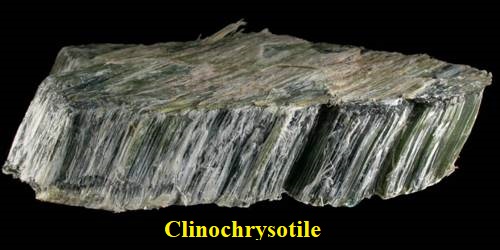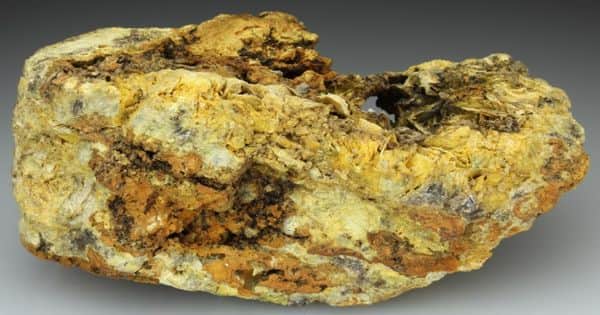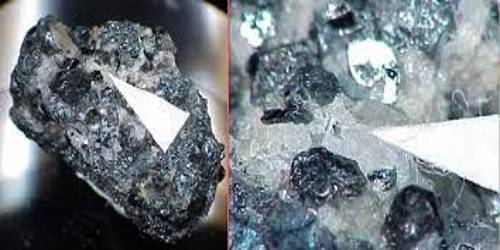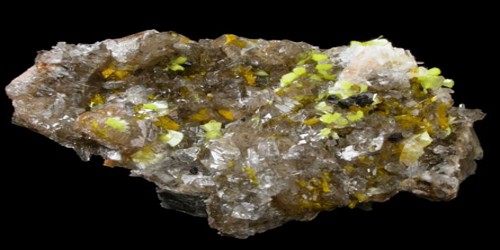Clinochrysotile is a soft, fibrous silicate mineral in the serpentine group of phyllosilicates, also called “white asbestos”. It is a monoclinic form of Chrysotile. It is a member of the Serpentine group. Its idealized chemical formula is Mg3(Si2O5)(OH)4. The material has physical properties which make it desirable for inclusion in building materials but poses serious health risks when dispersed into the air and inhaled.
General Information
- Category: Phyllosilicates (Kaolinite-serpentine group)
- Formula: Mg3(Si2O5)(OH)4
- Crystal system Monoclinic: clinochrysotile (most common)
- Crystal class: Clinochrysotile: prismatic (2/m)
- Space group: Clinochrysotile: C2/m

Properties
Clinochrysotile has a hardness similar to a human fingernail and is easily crumbled to fibrous strands composed of smaller bundles of fibrils. Naturally-occurring fiber bundles range in length from several millimeters to more than ten centimeters, although industrially-processed chrysotile usually has shorter fiber bundles. Clinochrysotile fibers have the considerable tensile strength and may be spun into thread and woven into cloth.
- Formula mass: 277.11 g/mol (ideal)
- Color: Grey to green
- Crystal habit: Acicular
- Fracture: Fibrous
- Mohs scale hardness: 2.5–3
- Lustre: Silky
- Streak: white
- Diaphaneity: Translucent
- Density: 2.53 g/ml
- Optical properties: Biaxial
- Dispersion: relatively weak
- Solubility: insoluble in water fibers degrade in dilute acid
Occurrence: Intermixed with orthochrysotile in veinlets cutting serpentinite.
Clinochrysotile or white asbestos is the most commonly encountered form of asbestos, accounting for approximately 95% of the asbestos in the United States and a similar proportion in other countries. It is a soft, fibrous silicate mineral in the serpentine subgroup of phyllosilicates; as such, it is distinct from other asbestiform minerals in the amphibole group.
Association: Orthochrysotile, lizardite, corundum.
Information Source:
















